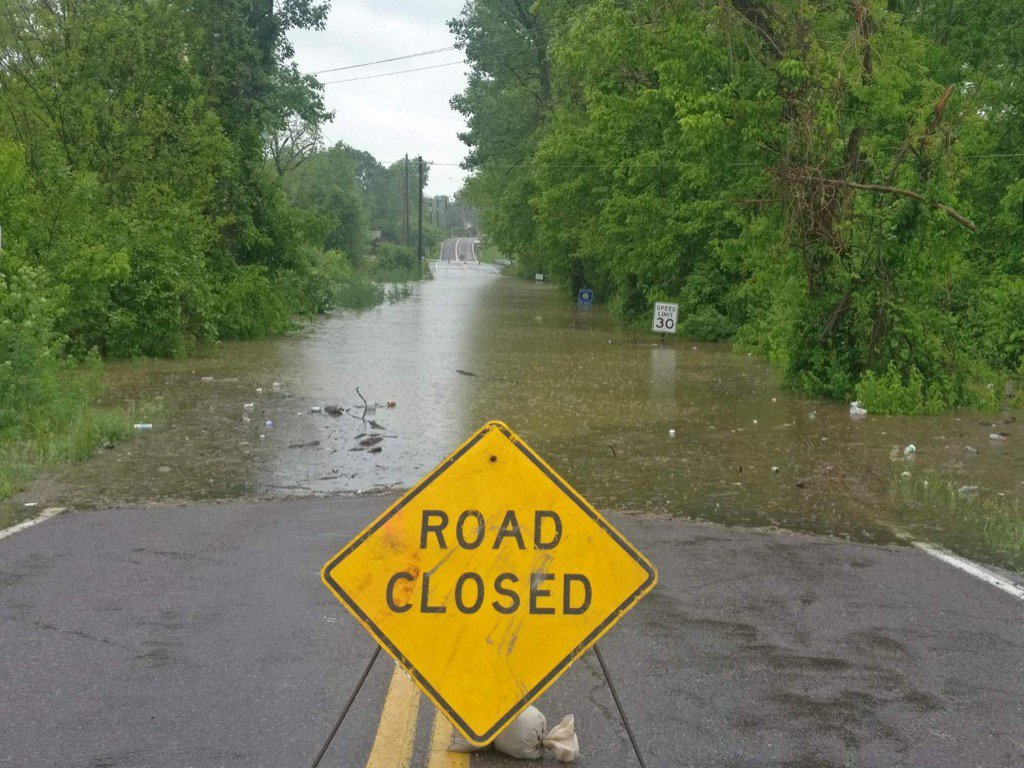A River Runs Through Us
The recent flood created problems throughout the area.
May 17, 2017
In the past two years, Missouri has experienced two extreme floods. In the past 25 years, Missouri has experienced three large, disastrous floods, causing millions of dollars in damages, and a significant amount of fatalities. According to livescience.com, there were 113 deaths associated with floods in 2011 in the United States. Floods in the United States–especially Missouri–are very serious. A study from the National Oceanic and Atmospheric Administration (NOAA) revealed that over the past 30 years, every year on average 81 deaths occurred from flooding. That’s more than the yearly death toll for hurricanes and tornadoes.
The most recent flood in early May 2017 struck a nerve with several people in Jefferson County. The Windsor School District, as well as several other districts in Jefferson and St. Louis County, had to close. Windsor missed three days of school because of the flood–more than the total of snow/ice days this year.
Junior Tyler Lingle said, “It made it really difficult for everyone getting around, especially those taking the AP tests. A lot of people couldn’t take their tests. Jefferson County was essentially an island.”
Unfortunately for those AP students, AP tests are a nationwide event. Every student participating in the test has to take it at the same time, so natural disasters don’t change the test date. Luckily for them, there are make-up days. The only problem is that the Windsor AP tests that were during the flood, Government and Literature, have their make-up days on May 17 and May 19, respectively. May 17 is during finals, so then students will have to make-up that, and May 19 is after school has ended for the summer.
Luckily, Windsor students and staff do not have to make up the three flood days. The Missouri Department of Elementary and Secondary Education granted Windsor, as well as several other schools, a waiver that allowed Windsor to keep May 18 as the last day of school.
So what, or who is causing the sudden increase in flooding? Is it the oil industry causing climate change? Is it the natural reaction of Earth rejecting humans?
The answer is that we are the problem, according to Robert Criss, PhD, earth and planetary sciences professor. Criss studied the flood that took place at the end of 2015. The increase in levees is the main contributor to the flood issue. Criss added, “It was essentially a winter flash flood on a continental-scale river.” Criss published a study on the increase in flooding back in 2016 after the flood in December 2015. Criss’ theory is that the Mississippi River has been leveed to the point that it behaves like a small stream–meaning that waters rise at a much faster and higher rate than normal. He also stated that the calculated water levels in the Midwest are half a meter to two meters taller than based on statistical data, suggesting that “100-year” floods will occur much more often than its suggested name.
Doomed fates aside, thankfully some good has occurred from the excessive water invading people’s houses. Recovery efforts went by smoothly–debris was removed, resources were given to victims of water damage, and shelters were established, including shelters for pets.
However, the flood recovery is still underway. Roads, homes, and businesses are still being repaired.
These floods can be avoided; Missouri needs to learn from its mistakes. Scientists like Robert Criss are identifying the problem. Excessive levees seem to be the biggest culprits. While they may be constructed to prevent flooding, they restrict rivers such as the Mississippi, causing them to rise and fall much quicker, like a creek. While we should be thankful that the floods seen in the past two years weren’t as bad as they could’ve been, people need to be aware that this sudden influx in floodwaters is our fault.




